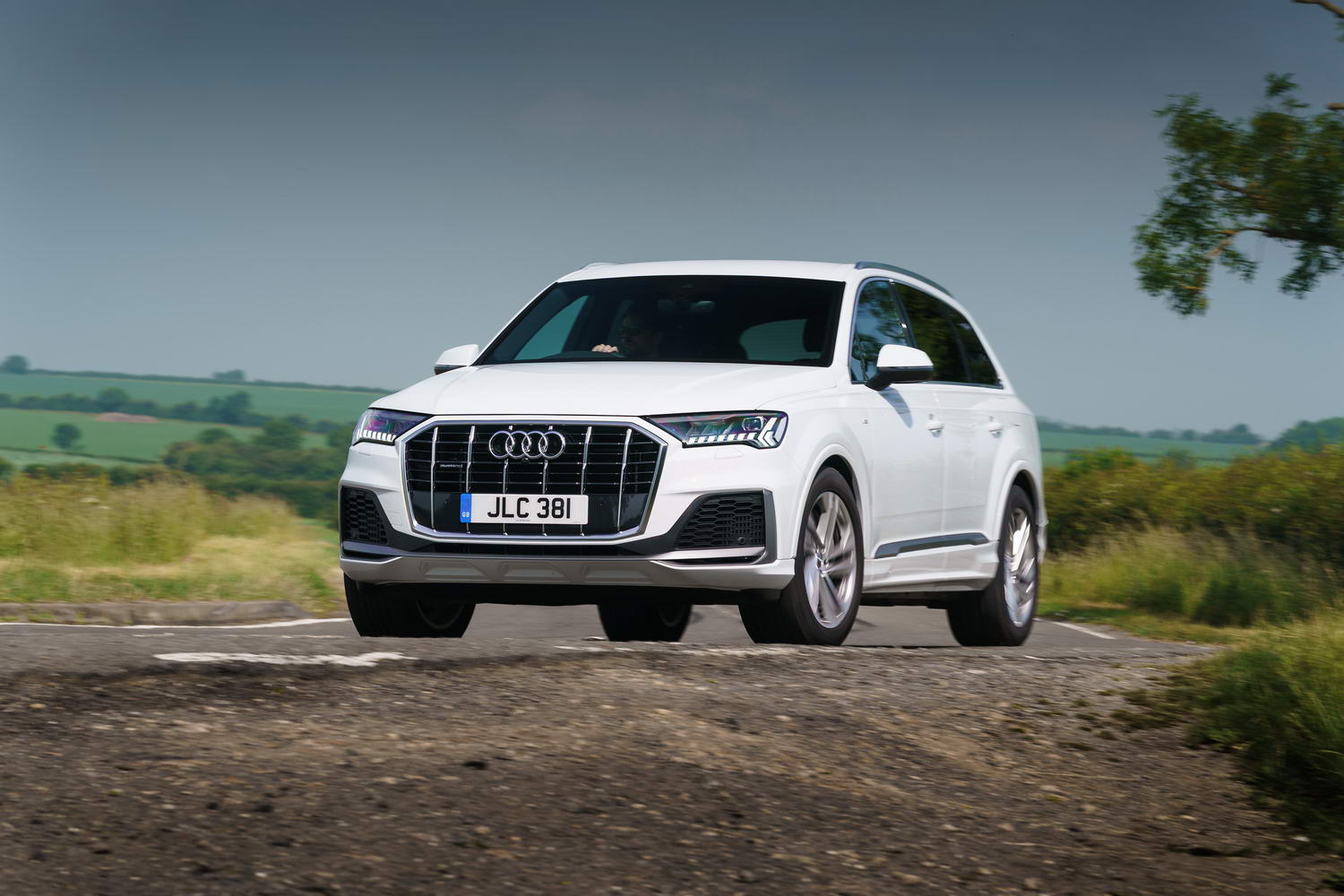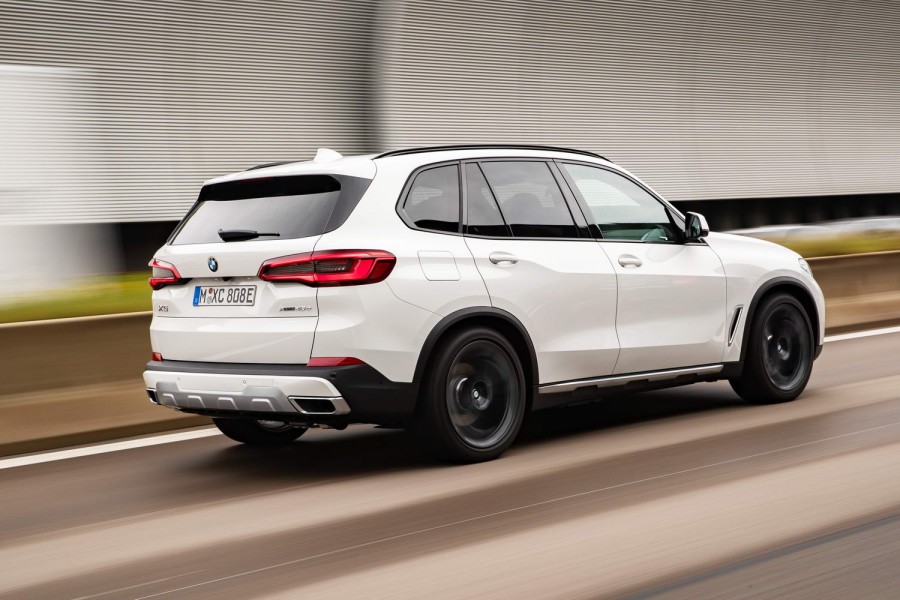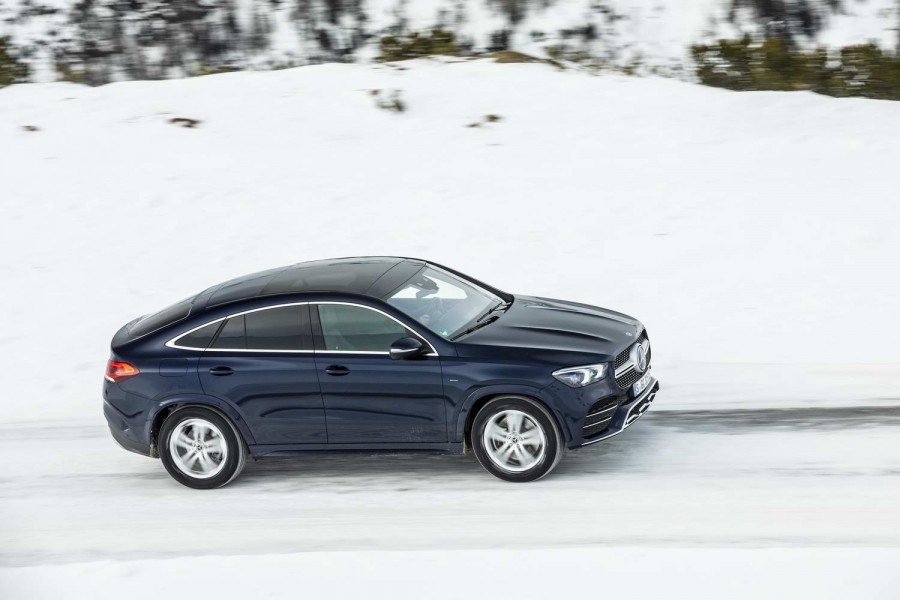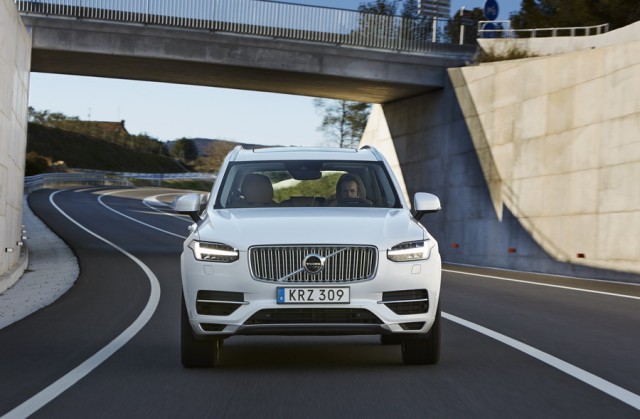The artist formerly known as the Audi Q7 e-tron has become the Audi Q7 55 TFSI e as part of the wider update of the German company's large SUV offering. It remains a plug-in hybrid and has some compromises to go with that status, but as a classy and cultured big SUV then the revised hybrid makes a lot of sense - especially as it's the cheapest way into ownership of a brand-new Q7 in this country.
In the metal
Audi's midlife tidy-up of the Q7 range is more obvious at the back of the vehicle than it is at the front, where a full-width chrome strip and more ovoid lamp clusters are the hallmarks of the updated SUV. Beyond that, the hybrid version looks hardly any different to its other relations, save for the '55 TFSI e' badging on the back and the additional 'filler' cap on the nearside-rear of the Q7, which is for the electric charging port. Same story inside, where the Q7's technologically advanced and sturdily built cabin is augmented by a few additional hybrid-related switches and buttons in the TFSI e, but is otherwise indistinguishable from the other models in the range. There is one big difference within, though, and that relates to the maximum available number of seats. Due to the location of all the hybrid hardware, the Q7 55 TFSI e can only be specified as a five-seat vehicle and not a seven-seater, like the regular TDI equivalents. The pay-off to that lack of outright human-carrying capacity is a large boot, measuring at least 650 litres with all seats in place.
Driving it
Audi is on a big electrified offensive right now and there are TFSI e models landing in almost all of its product ranges seemingly every day - starting with the A3 40 TFSI e and climbing upwards. The use of this new badging is to distinguish the plug-in hybrid Audis, previously known as 'e-tron' models, from the full electric vehicles in the German firm's portfolio, which have appropriated the 'e-tron' name for their zero-emissions kind.
There's a bigger change to the Q7 hybrid than just a handful of letters on its badge, though, as the Q7 e-tron was a diesel-electric plug-in hybrid, whereas this new 55 TFSI e is, as those first four identifying initials would suggest, is petrol-electric. Replacing the old 3.0-litre V6 TDI engine plus 94kW electric motor and 17.3kWh lithium-ion battery pack (peak drivetrain outputs: 373hp and 600Nm) is a 3.0-litre turbocharged V6 TFSI petrol engine allied to a 100kW electric motor and a 17.9kWh battery (peak drivetrain outputs: 381hp and 600Nm). You might recognise this petrol-electric propulsion system as the same one used in other Volkswagen Group products, where it either goes under a performance-branded umbrella as in the incoming Volkswagen Touareg R or it just goes in a performance-oriented machine in the first place, as with the Porsche Cayenne E-Hybrid.
However, in both of those two other vehicles, despite the fact the V6 engine makes the same 340hp/450Nm and the electric motor is similarly rated at 136hp/400Nm, the VW and Porsche are given peak overall figures of 462hp and 700Nm, some 81hp and 100Nm up on the Q7 55 TFSI e, which in turn is a mere 8hp to the good over the old Q7 e-tron and it doesn't have any extra torque, either. So at first glance, it doesn't appear as if the performance game has moved on significantly for the revised Audi hybrid SUV.
That said, this SUV feels like a more polished take on the plug-in formula this time around. The V6 petrol engine is a smoother, more cultured operator than the old TDI unit and, in the Q7, it is allied to one of Audi's silken Tiptronic torque-converter autos, rather than an S tronic dual-clutch transmission. So when the battery pack has power and the V6 is sitting dormant as a result, the Q7 55 TFSI e is an incredibly quiet and civilised machine in which to travel; this is because adaptive air suspension is part of the standard equipment on the hybrid SUV, which gives great ride quality.
Once the engine fires up, the Q7 doesn't lose a scintilla of its unruffled composure, and occupant comfort is maintained just as much at higher speeds as it is at town velocity. It also has a WLTP-ratified 47km of electric range, which is decent for a thing that weighs in at a hefty 2,450kg with just a driver and fluids onboard. Of course, it's the weight that somewhat dulls the rest of the driving experience in the large Audi SUV, because - while it is perfectly proficient and reasonably capable in the corners - it's not a vehicle that enjoys being thrown around, and it also doesn't feel massively quick despite its on-paper, sub-six-second 0-100km/h time. However, family SUVs don't need to be hot-rods on stilts and there's plenty enough muscularity in the midrange from the V6 and electric motor, so the fact the Q7 55 TFSI e is no great shakes on an interesting road is not really a huge problem for the target market.
What you get for your money
Audi Ireland will sell the Q7 as both an SE and an S line, the prices starting at €81,172 for the former and €87,620 for the latter. Both these figures, though, are without factoring in the SEAI grant of €5,000 for a plug-in hybrid of more than €20,000 list price, which the Q7 TFSI e should qualify for. So although the hybrid SUV is only available as a five-seater, it looks excellent value when compared to the 45 TDI (€92,956 as an SE, €100,047 as an S line) and 50 TDI (€97,936 as an SE, €105,386 as an S line) models that are otherwise available in the Irish Q7 line-up.
Summary
Audi hasn't made transformative changes to the way the Q7 55 TFSI e looks or performs when compared to the Q7 e-tron it supersedes, but the shift from diesel to petrol power has significantly improved the overall refinement of the plug-in hybrid package. Factor in a typically superb cabin from the German company and also the most affordable list prices of any new Q7, and this 55 TFSI e looks like the sensible default choice for buyers of Audi's big SUV here in Ireland.




























